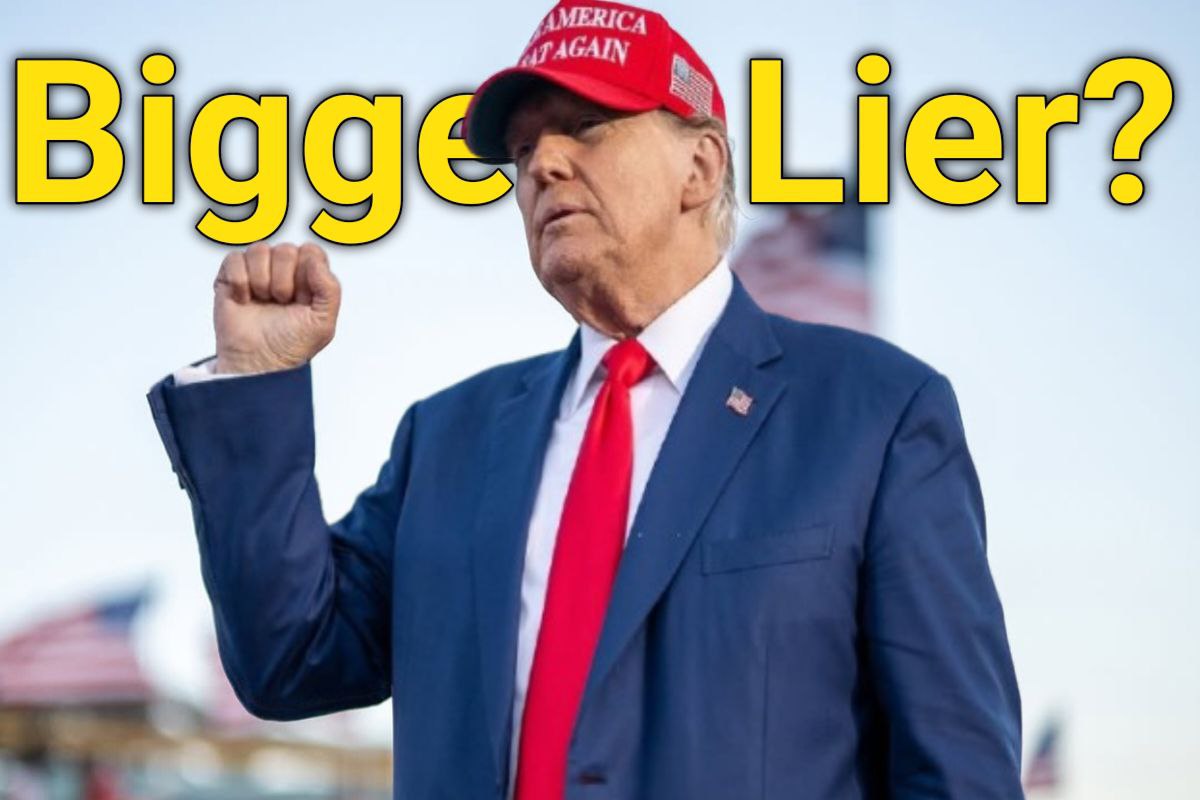Donald Trump, now in his second term, continues a decades-long legacy of misinformation—averaging 21 lies a day. From false military claims to election fraud lies and racist conspiracy theories, his untruths have reshaped U.S. politics.
Donald Trump, currently serving his second term as President of the United States, continues to be one of the most divisive figures in global politics. His presidency has been defined not just by policy decisions or campaign strategies, but by a long trail of misleading claims, conspiracy theories, and outright falsehoods. From exaggerated foreign policy victories to persistent misinformation about elections, Trump’s relationship with the truth has been the subject of global scrutiny. This blog explores his most significant false claims and how they have shaped public discourse.
President Donald Trump: The Factory of Lies
The Iran Nuclear Strike Claim Recently, Donald Trump declared that Iran’s nuclear program had been completely destroyed following a U.S. military strike. He used the word “obliterated,” insisting the program had been wiped out forever. However, leaked intelligence from the U.S. Defense Intelligence Agency revealed that only minor damage had occurred to Iran’s facilities. Further, Iranian media outlet Amwaj Media reported that Iran had been pre-warned about the attack and was told it would be a one-time strike. Despite mounting evidence against his claim, Trump lashed out at CNN and The New York Times, demanding that the reporters covering the leak be fired—actions that further convinced many of the truthfulness of the leaked report.
A Habitual Pattern of Lying This was not Trump’s first brush with misleading the public. According to The Washington Post, during his first term, Donald Trump made 3,573 false or misleading statements, averaging about 21 lies per day. The Toronto Star reported 5,276 lies from 2017 to 2019 alone. Early in his presidency, many media outlets hesitated to directly label his statements as lies, but by mid-2019, major outlets like CNN and The New York Times began openly doing so.
Steve Bannon, Trump’s former campaign CEO, once stated that Trump’s strategy was to flood the public sphere with so many contradictory statements that the media and the public couldn’t keep up—a tactic drawn from authoritarian propaganda playbooks.
The Big Lie: Election Fraud Claims After losing the 2020 U.S. presidential election, Donald Trump repeatedly claimed massive voter fraud had robbed him of victory. Statements like “This is a fraud on the American public” and “Frankly, we did win this election” became rallying cries for his base. Many analysts likened this to Adolf Hitler’s “Big Lie” propaganda strategy—repeat a colossal lie often enough and people begin to accept it as truth.
Academic and Media Criticism Experts and historians have continuously called out Trump’s misleading tactics. Professor Carol McGranahan said Trump differs from traditional politicians because of his consistent and strategic lying. Historian Douglas Brinkley argued that no other U.S. president had lied as frequently and blatantly as Trump. Washington Post even introduced a new category—“Bottomless Pinocchio”—for repeated lies. Trump had 14 statements inducted immediately.
Stephanie Grisham, Trump’s former press secretary, later revealed that Trump advised her to “just keep repeating things” because people would eventually believe them. This manipulation tactic, known as the Illusory Truth Effect, has been used historically to distort public perception.
Obama Birther Conspiracy Donald Trump was the leading figure in the “birther” conspiracy, claiming that Barack Obama was not born in the United States. He repeatedly demanded Obama’s birth certificate and claimed he might have been born in Kenya. Despite Obama releasing his birth certificate showing he was born in Hawaii in 1961, Trump refused to acknowledge the truth and instead falsely blamed Hillary Clinton for starting the rumor.
Decades of Business Lies and Inflated Image: Donald Trump’s relationship with falsehoods goes back to his business career. In 1984, he falsely claimed to own an entire block of buildings in Manhattan when he actually owned just two. He manipulated Forbes into including him on their richest Americans list by faking his net worth and even posing as his own spokesperson, “John Barron.”
Donald Trump once claimed he suffered no loss during the 1987 stock market crash because he sold his shares early. However, SEC filings later revealed he lost $19 million. In 2009, he erected a fake Civil War monument at one of his golf courses, falsely stating that a bloody battle had occurred there. Historians quickly debunked the claim.
False Golf Championships and Threats: Donald Trump has claimed to have won 18 golf club championships, but evidence suggests he only legitimately won two. The rest were held at clubs he owned or controlled, and members were allegedly warned not to outplay him. Professional golfer Buddy Marucci confirmed that Trump would threaten to revoke memberships if someone outperformed him.

Racial Controversies and Extremist Links In 1970, the U.S. Department of Justice sued Donald Trump and his father for racial discrimination—refusing to rent apartments to Black tenants. In 1991, Trump stated he didn’t want Black accountants. He frequently described Mexican immigrants as “rapists” and “criminals.” In 2016, when KKK leader David Duke endorsed Trump, he claimed not to know who Duke was or what the KKK stood for, an excuse most Americans found implausible.
The “Art of the Deal” and More Lies Tony Schwartz, ghostwriter of Trump’s famous book The Art of the Deal, later regretted working with him, admitting he exaggerated Trump’s image. Trump also falsely claimed that his grandfather was American, when in fact he was German—a deliberate lie to align better with post-WWII American sentiment.
Trump also lied about predicting Osama bin Laden’s threat in his 2000 book. He claimed he warned about bin Laden before anyone knew him, but no such reference exists in the book. In reality, bin Laden was already on America’s most wanted list since 1998.
Crowning the “King of Whoppers” In 2015, FactCheck.org named Trump the “King of Whoppers,” stating no public figure had ever told as many lies in such a short time. Trump’s falsehoods weren’t limited to politics—he once claimed that Senator Ted Cruz’s father was involved in JFK’s assassination. This lie was repeated so often that it damaged Cruz’s campaign.
BuzzFeed reporter Andrew Kaczynski highlighted how Trump sometimes feigned memory lapses to dodge accountability. This included pretending not to know extremist figures or controversial issues when it was politically convenient.
Conclusion Donald Trump’s falsehoods span decades, from his business empire to his time in the Oval Office—now in his second term. Whether through exaggeration, distraction, or outright fabrication, his consistent use of misinformation has reshaped political discourse in the U.S. and beyond. In a world increasingly reliant on fact-based governance, Trump’s legacy may well be defined not by the policies he passed, but by the truths he distorted.

